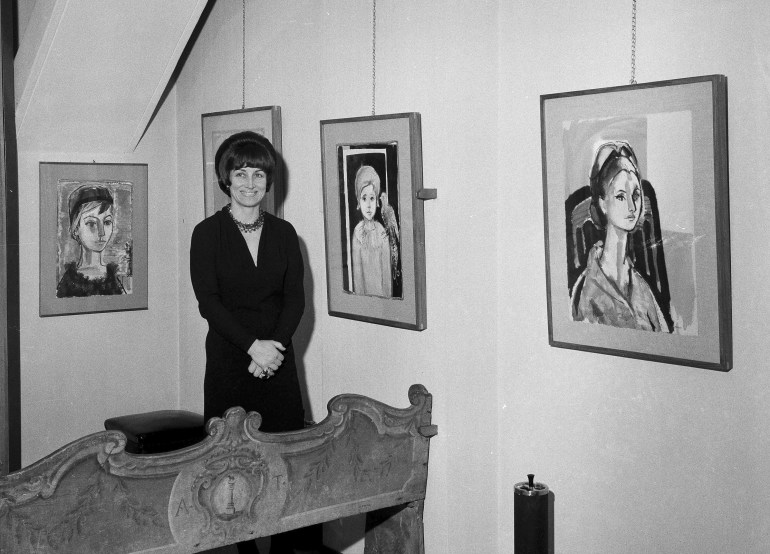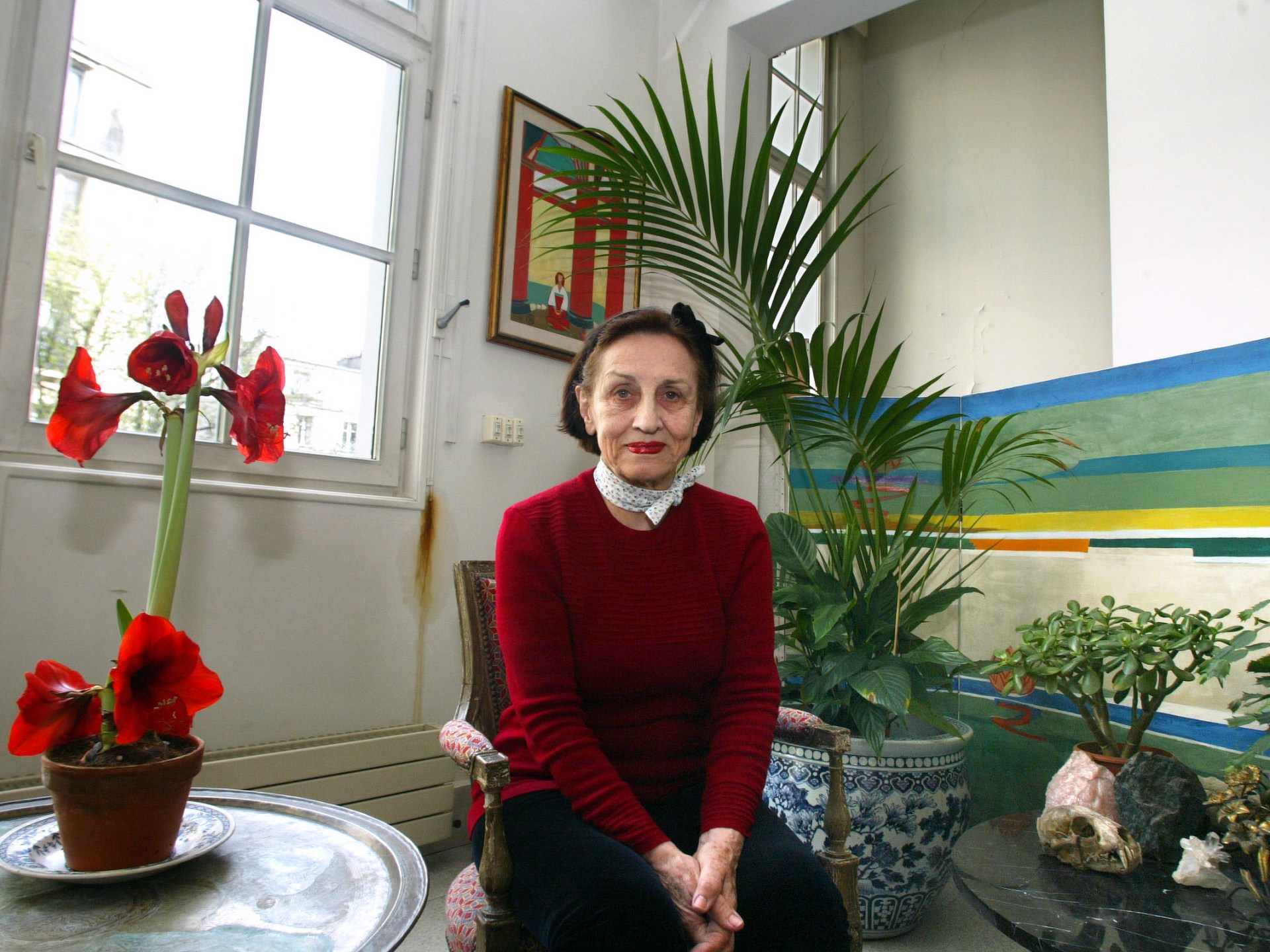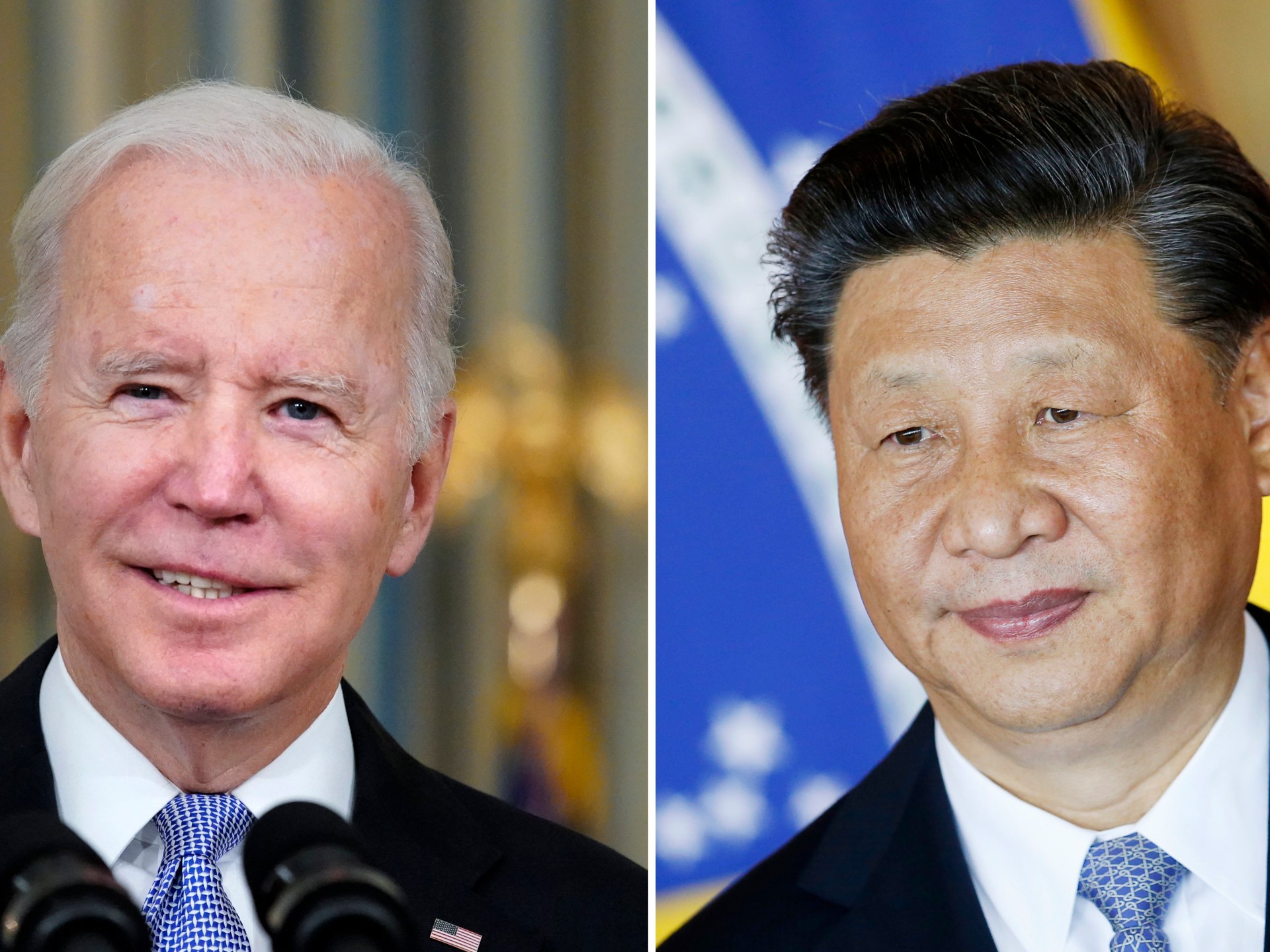Artist Francoise Gilot, who loved and left Picasso, dies at 101
Francoise Gilot, a prolific and acclaimed painter who was nonetheless more famous for her turbulent relationship with Pablo Picasso — and for leaving him — has died. She was 101.
Gilot’s daughter, Aurelia Engel, told The Associated Press news agency her mother had died on Tuesday in hospital in New York, where she had lived for decades.
“She was an extremely talented artist, and we will be working on her legacy and the incredible paintings and works she is leaving us with,” Engel said.
French-born Gilot had long made her frustration clear that despite acclaim for her art – she was already one of the most respected artists of the emerging School of Paris, which grouped French and emigre artists in the capital during the first half of the 20th century when the two met – she would still be best known for her relationship with Picasso.
The couple met in 1943, when she was 21 and he was already in his sixties and had two children: Claude and Paloma.
Picasso often painted Gilot, portraying her as the radiant and haughty Woman-Flower in 1946 and heavily pregnant in Femme Assise in 1949.
The two never married and, unlike other key women in the renowned painter’s life, Gilot eventually walked out.
“Pablo was the greatest love of my life, but you had to take steps to protect yourself. I did, I left before I was destroyed,” she confided in Janet Hawley’s 2021 book Artists and Conversation.
“The others didn’t, they clung on to the mighty Minotaur and paid a heavy price,” she said, referring to Picasso’s first wife, dancer Olga Khokhlova, who lapsed into depression after he left her; his former teen lover, Marie-Therese Walter, who died by suicide; his second wife Jacqueline Roque, who also died by suicide; and his best-known muse, artist Dora Maar, who had a nervous breakdown.
“He never saw it coming,” Engel, 66, said of her mother’s decision to leave. “She was there because she loved him and because she really believed in that incredible passion of art which they both shared. [But] she came as a free, though very, very young, but very independent person.”
Born on November 26, 1921, in well-to-do Neuilly-sur-Seine in suburban Paris, Gilot was an only child.
“She knew at the age of five that she wanted to be a painter,” Engel said. In accordance with her parents’ wishes, she studied law but dropped out to pursue her passion for art.
She held her first exhibition in 1943 when France was under Nazi occupation.
That was the year she met Picasso, by chance, when she and a friend visited a restaurant on the Left Bank, amid a gathering that included Maar, the photographer, painter and poet who was his companion at the time.
“I was 21 and I felt that painting was already my whole life,” she wrote in Life With Picasso.

When Picasso asked Gilot and her friend what they did, the friend responded that they were painters, to which Picasso responded, Gilot writes: “That’s the funniest thing I’ve heard all day. Girls who look like that can’t be painters.” The two were invited to visit Picasso in his studio, and Gilot and Picasso soon began a relationship.
Not long after leaving Picasso in 1953, Gilot reunited with a former friend, artist Luc Simon, and married him in 1955. They had a daughter — Engel — and divorced in 1962.
In 1970, Gilot married Jonas Salk, the American virologist and researcher who developed the first polio vaccine, and began living between France and the United States. She took US citizenship and moved to New York permanently in 1995 after Salk died.
Her work features in the collections of prominent museums, including the Centre Pompidou in Paris, and the Metropolitan Museum of Art and the Museum of Modern Art in New York.
Her art has only increased in value over the years. In 2021, her Paloma à la Guitare (1965) sold for $1.3m at Sotheby’s, which described it as a “mesmerisingly bold portrait”.
Over the course of her career, Gilot produced at least 1,600 canvasses and 3,600 works on paper.
Simon Shaw, Sotheby’s vice chairman for global fine art, said it had been gratifying to see, in the past decade, Gilot’s paintings “achieve the recognition they truly deserved.”
“To see Francoise as a muse [to Picasso] is to miss the point,” Shaw wrote in an email. “She was established on her course as a painter when first she met Pablo. While her work naturally entered into dialogue with his, Francoise pursued a course fiercely her own — her art, like her character, was filled with colour, energy and joy.”
Engel noted that although the relationship with Picasso was clearly a difficult one, it gave her mother a certain freedom from her parents and the constraints of bourgeois life — and perhaps enabled her to pursue her true dream of being a professional painter, a passion she shared with Picasso above all else.
“They both believed that art was the only thing in life worth doing,” she said. “And she was able to be her true self, even though it was not an easy life with him. But still she was able to be her true self.”
Her life with Picasso was made into the 1996 film Surviving Picasso, directed by James Ivory.




